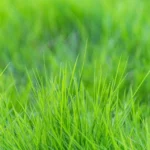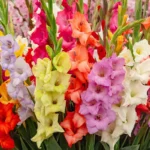
Leafy Spurge is a plant belonging to the Euphorbiaceae family. This plant is native to Europe and Asia. It was introduced in North America at the beginning of the 19th century, since then the Americans have tried unsuccessfully to eradicate this plant. Leafy spurge inhabits pastures, rangelands, grasslands, prairies and areas near the roads. It reproduces quickly, easily conquers new habitats, and kills native plant species. Commercially available herbicides are generally ineffective against this plant. Leafy spurge is not on the menu of many animals because it produces toxic substances. Fortunately, the toxins in Leafy spurge do not affect all animals. Certain herbivores and beetles are used as biological weapons against these weeds.
Leafy spurge is a deep-rooted perennial weed native to Europe and Asia.
Leafy spurge is herbaceous plant which develops few upright stems. They can reach 2.5 to 3 feet in height.
It may have been introduced to North America in the 19th Century as an ornamental or contaminant in imported grain or ballast water.
Leaves of leafy spurge are small, usually 1.5 to 3 inches long. They are oval or lanceolate in shape and wavy on the edges.
All parts of the plant contain a milky latex which is irritating to cattle, horses and some humans.
It grows in a variety of dry and moist habitats ranging from flood plains and riverbanks to
grasslands, ridges and mountain slopes.
Sheep, like goats, can graze leafy spurge without ill effects.
Leafy spurge develops extremely strong root that can grow 26 feet in depth. Lateral roots can spread 15 feet horizontally.
In Alberta, leafy spurge occurs throughout most of the agricultural areas of the province, with
the most extensive infestations occurring in the southern and east-central areas.
It frequently infests rough terrain, hindering access for management by conventional means.
It was introduced to Minnesota in 1890 as seed in a bushel of oats from Russia.
Flowers of leafy spurge are miniature, yellow-green in color and surrounded with modified yellow leaves called bracts. Individual flowers are gathered in umbrella-shaped inflorescence called umbel. Flowers develop during the spring.
By 1992, it was estimated that there were 800,000 infested acres in the central, northern, and western parts of the state, in addition to the Twin Cities area.
Each flower bud produces up to 140 seeds, while each plant produces around 130 000 seeds. Seeds are released after bursting of the capsule. This process resembles explosion and leads to spreading of seeds 15 feet away from the mother plant.
Most leafy spurge plants flower in May and June, although mowed stems may flower later.
Seed can remain dormant up to 8 years before it starts to germinate under appropriate weather conditions.
The leaves are simple and opposite with a blue-grey hue.
Cattle, birds and other animals that inhabit grassy habitats facilitate dispersal of the seed. Humans can transfer seeds from one location on another by carrying the seeds on their cloths and agricultural machines.
Besides terrestrial routes, seeds can be dispersed by water.
If the stems or leaves are cut, a distinctive white, milky sap exudes.
Except via seed, leafy spurge can propagate via vertical and horizontal parts of the root.
One plant can send up clusters of multiple stems that arise from the same underground root system.
Leafy spurge often lives in symbiosis (mutually beneficial relationship) with fungi. Fungi provide all required nutrients and ensure survival of leafy spurge even on infertile soils.
The plant reaches a maximum height of about 4 feet.
Leafy spurge produces toxins which prevent development of other nearby plants.
It grows in full to part sun in a wide range of soil types, from dry to moist.
All parts of the leafy spurge contain white milky sap which is toxic for most domestic animals. Some animals, such as sheep and goats, consume it without visible side effects.
Each plant can produce large clumps of shoots from extensive underground stems and roots allowing the weed to overtake other vegetation quickly.
Humans will experience skin irritation, swelling and formation of blisters after exposure to the milky sap of leafy spurge.
Leafy spurge also produces seed that explodes from the seedpods and can travel up to 20 feet.
Certain countries eliminate leafy spurge from the pastures with the help of sheep and goats.
Disturbances such as road construction create opportunities for leafy spurge to spread along roadways and into agricultural and natural areas.
Another way to eliminate leafy spurge from the ground is to use flea beetles which feed on the root and leaves of leafy spurge.
Leafy spurge is distributed across the northern half of the United States.
Leafy spurge is perennial plant which means that it can survive more than 2 years in the wild.
Leafy spurge is reported in all Minnesota counties with the largest infestations in western Minnesota.









